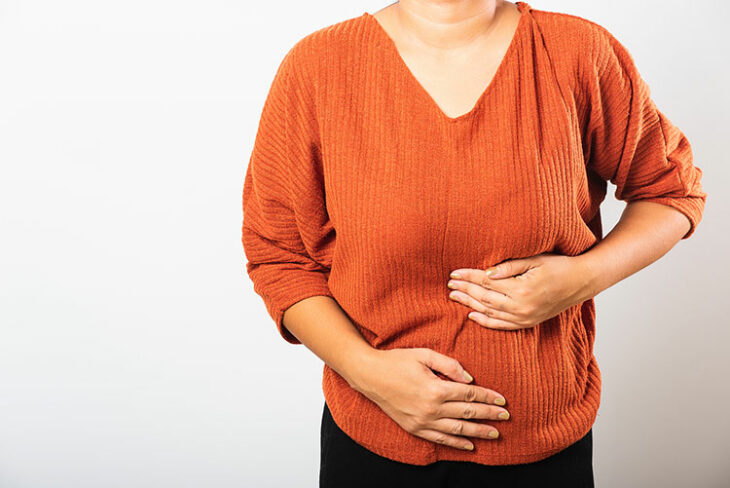By Dr. Alisha Ware
Is menopause belly a myth or a real phenomenon? In truth, it’s a little of both, as many complex factors are at work. Menopausal transition usually begins in a woman’s 40s when her cycles start to vary in length and become heavier, then space out and stop. One year after the final cycle is true menopause. This happens because ovaries shut down, leading to the loss of estrogen and progesterone. During the menopausal transition, patients frequently want to check their hormones.
Usually, symptoms are a better guide to their menopausal status than hormone levels. Ovaries rarely shut down in a linear fashion. Rather, they decrease hormone production for a while, then rebound. Levels can vary widely and may not seem in sync with symptoms. The most common symptom women complain about is weight gain, and they really hope their hormones are to blame. Chronological age has the greatest impact on weight gain. Metabolism slows about 10 percent every decade. Usually by midlife, it reaches a tipping point, where weight begins to rise more rapidly.
Then comes menopause, which causes fat deposit preferentially in the abdomen. Abdominal fat increases by about 12 percent during the menopausal transition, even if you don’t gain much weight. Add to this the fact that life stressors like divorce, loss of a parent, and children leaving or getting married are more common in midlife, and the pounds may add on even more. So midlife weight gain and menopausal belly go hand in hand. The biggest worry we as physicians have, however, isn’t just the weight.
A woman’s risk for cardiovascular disease increases substantially in menopause, even if a patient isn’t overweight. Add extra weight, and risk increases for host of chronic conditions, such as hypertension, diabetes and high cholesterol.
So, what do we do? If only it were a simple as replacing hormones. Taking hormones during menopausal transition has been shown to have a negligible effect on weight — a difference of less than five pounds and half an inch on the waistline. Given that hormone replacement can have some negative side effects, these differences are not a reason to start them.
But what is the answer? You probably see a dozen ads on Facebook every day, all promising that some program or supplement is the solution. However, you’ll find almost all of them work with a diet based on vegetables and lean protein.
If you find yourself struggling with weight gain, try these tips:
- Activity levels should increase to 150 minutes of exercise per week.
- Cutting current dietary intake, even if you don’t think you eat that much, by 400 to 600 calories per day and opting for quality foods, like lean protein, vegetables, fruits, nuts, and true whole grains, not only will lead to weight loss, but improved cholesterol, blood pressure and cardiovascular health.
- Know your body mass index. If it’s over 30, or if it’s over 27 with certain health problems, weight loss medication or surgery may be covered by your insurance.
Yes, weight gain in the 40s and 50s happens, and yes, menopause puts a lot of it in our abdomen; however, it can be rectified. Change is slow and requires steady commitment, but if you take the right steps, results will come.
Dr. Alisha Ware is an obstetrics and gyne- cology specialist with The Woman’s Clinic PA. Reach her at (228) 864-2752.


